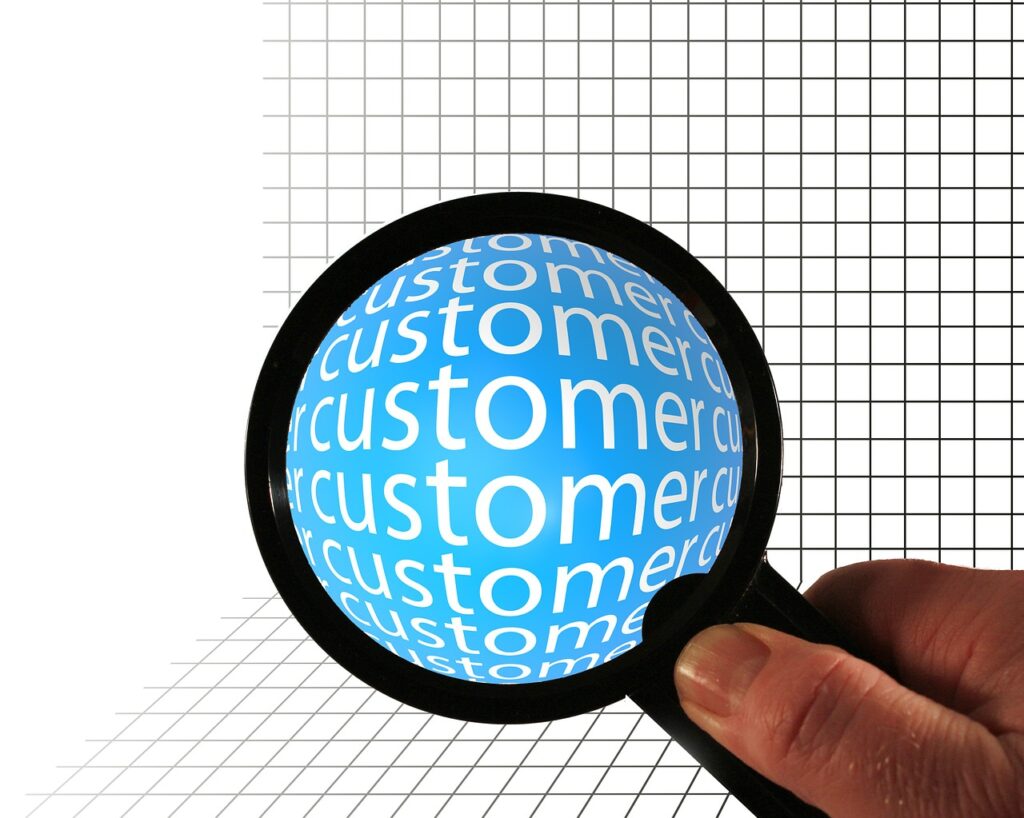
Managing client relationships is crucial for the success and growth of any agency. Building strong connections and creating a positive rapport with your clients not only fosters loyalty, but also leads to long-term business partnerships. In this article, we will explore effective strategies and practical tips to help you navigate and excel in managing client relationships in your agency. From clear communication to understanding their needs, together we will uncover the keys to fostering trust and mutual collaboration with your clients. So, let’s dive in and discover how you can effectively manage client relationships in your agency.

Creating strong client relationships
Building trust and credibility is the foundation of any strong client relationship. As an agency, it is crucial to establish a sense of trust with your clients by consistently delivering high-quality work and being transparent in your communication. It is important to meet deadlines, exceed expectations, and demonstrate your expertise in your field. By consistently providing exceptional service and demonstrating your commitment to their success, you can build a strong foundation of trust and credibility with your clients.
Understanding client needs and expectations is key to creating strong relationships. Take the time to listen to your clients and ask probing questions to truly understand their goals and objectives. By understanding their needs, you can tailor your services and recommendations to meet their specific requirements. Ensure that you communicate effectively with your clients and keep open lines of communication to ensure that you are continually meeting their expectations throughout the duration of your partnership.
Communicating effectively
Effective communication is essential in developing and maintaining strong client relationships. One key communication strategy is active listening. By truly hearing and understanding your clients’ concerns, needs, and objectives, you can better address their specific requirements and tailor your services accordingly. Use open-ended questions to encourage dialogue and allow your clients to express themselves fully.
Regular check-ins and updates are another essential aspect of effective communication. Schedule regular meetings, whether in person or virtually, to provide progress updates and discuss any issues or concerns. Regular communication helps to build trust and demonstrates your commitment to keeping your clients informed and involved in the process.
Clear and concise communication is crucial to avoid misunderstandings and ensure that your clients have a clear understanding of the work being done. Use simple and straightforward language when communicating with your clients, avoiding jargon or technical terms that may confuse them. Break down complex concepts into easily digestible information and provide regular updates in a consistent format that your clients can easily understand.
Prompt response to client inquiries is crucial in maintaining open lines of communication. Responding to emails, phone calls, or other inquiries in a timely manner shows your clients that you value their time and concerns. Aim to reply to client inquiries within 24-48 hours, even if it’s just to acknowledge receipt of their message and let them know that you are addressing their concerns.
Setting realistic expectations
Setting realistic expectations is important to avoid disappointment and maintain a positive client-agency relationship. Be transparent with your clients about what can be achieved within the given timeline and budget. Clearly communicate any potential limitations or constraints that may affect the project, and offer alternative solutions if necessary.
It is also important to manage expectations regarding outcomes and results. Be clear about what can be realistically achieved and provide examples or benchmarks to support your estimates. By setting realistic expectations from the start, you can avoid misunderstandings and any potential client dissatisfaction.
Providing excellent customer service
Providing excellent customer service should be a top priority for any agency looking to build strong client relationships. Going above and beyond to meet your clients’ needs and provide exceptional service can set you apart from your competitors.
Listen to your clients’ feedback and concerns and take the necessary steps to address them promptly. Offer proactive solutions and suggestions to improve their experience or achieve their objectives more effectively. Being adaptable and flexible in your approach demonstrates your commitment to their success and shows that you are willing to go the extra mile to ensure their satisfaction.
Consistently providing value-added services can also contribute to excellent customer service. Identify additional needs or opportunities for your clients and offer customized solutions that align with their goals. By providing ongoing support and guidance beyond the initial project, you can foster a long-term partnership and strengthen your client relationships.
Effective communication strategies
Active listening
Active listening is a crucial communication strategy when managing client relationships. It involves fully engaging with your clients’ concerns, needs, and objectives, and demonstrating genuine interest in understanding their perspective. By actively listening, you can discover valuable insights and tailor your services to meet their specific requirements. This will help you build trust and credibility with your clients and foster a more productive and collaborative relationship.
Regular check-ins and updates
Regular check-ins and updates are essential to keep clients informed and involved in the project. Schedule frequent meetings or calls to discuss progress, address any concerns, and ensure that everyone is on the same page. These check-ins provide an opportunity to provide updates on milestones or deliverables, seek feedback, and make any necessary adjustments to the project plan. Regular communication helps to build transparency and trust, ensuring that clients feel valued and informed throughout the process.
Clear and concise communication
Clear and concise communication is essential to avoid any misunderstandings or confusion. Use simple and straightforward language when speaking or writing to your clients, avoiding technical jargon or complicated terms. Break down complex concepts into easily understandable information, and provide visual aids or examples to support your explanations. Clear and concise communication helps to ensure that your clients have a clear understanding of the work being done and can make informed decisions.
Prompt response to client inquiries
Promptly responding to client inquiries is crucial for maintaining open lines of communication and demonstrating your commitment to their needs. Aim to respond to emails or phone calls within 24-48 hours, even if it’s just to acknowledge receipt of their message and let them know that you are working on addressing their concerns. This shows your clients that their questions and concerns are a priority to you and helps to build trust and confidence in your agency.
Proactive problem-solving
Identifying potential issues
Proactive problem-solving involves anticipating and addressing potential issues before they arise. By identifying potential challenges or obstacles early on, you can take proactive measures to prevent or mitigate their impact. This can involve reviewing project plans, conducting risk assessments, or seeking input from team members or clients to identify potential areas of concern. By being proactive, you can demonstrate your commitment to the success of the project and build trust with your clients.
Addressing concerns promptly
When concerns or issues arise, it is essential to address them promptly and professionally. Actively listen to your clients’ concerns, seeking to understand their perspective and empathize with their challenges. Work together to find a mutually beneficial solution that addresses their concerns while aligning with the goals and objectives of the project. By addressing concerns promptly and effectively, you can prevent them from escalating and maintain a positive client-agency relationship.
Offering proactive solutions
In addition to addressing concerns, it is important to offer proactive solutions to your clients. Anticipate potential challenges and provide suggestions or recommendations to prevent or overcome them. This shows that you are actively engaged in the project and invested in your clients’ success. Proactively offering solutions not only resolves issues more efficiently; it also demonstrates your expertise and commitment to delivering value to your clients.
Being adaptable and flexible
Being adaptable and flexible is crucial in navigating the ever-changing landscape of client relationships. Circumstances can change unexpectedly, and being able to pivot and adjust your approaches or strategies accordingly can help maintain strong client relationships. When faced with changes or unforeseen challenges, communicate openly with your clients, listen to their concerns, and work together to find the best way forward. By demonstrating adaptability and flexibility, you show your clients that you are committed to finding solutions that meet their needs and goals.
Establishing mutual goals
Understanding client objectives
Establishing mutual goals begins with a deep understanding of your client’s objectives. Take the time to listen to your clients, ask clarifying questions, and gain a thorough understanding of their desired outcomes. By understanding what they hope to achieve, you can align your agency’s efforts and strategies to support their goals effectively.
Aligning agency goals with client goals
Once you understand your client’s objectives, it is crucial to align your agency’s goals with theirs. Clearly communicate how your agency’s services or offerings can help them achieve their goals, and provide examples or case studies to illustrate your approach. By aligning your goals, you establish a collaborative partnership and demonstrate your commitment to their success.
Tracking progress and providing updates
To maintain a focus on mutual goals, it is important to regularly track progress and provide updates to your clients. Clearly communicate key milestones, deliverables, and timelines to keep everyone on the same page. Regularly share progress reports or project dashboards that outline accomplishments and upcoming tasks to maintain transparency and accountability. By providing consistent updates, you demonstrate your commitment to achieving mutual goals and ensure that your clients stay informed and engaged.
Celebrating achievements together
Finally, celebrating achievements together is crucial for reinforcing a sense of partnership and mutual success. When milestones are reached or goals are achieved, take the time to acknowledge and celebrate these accomplishments with your clients. Recognize their contributions and highlight the impact of their partnership in the overall success of the project. By celebrating achievements together, you strengthen the relationship and create a positive atmosphere of collaboration and accomplishment.

Managing client expectations
Setting realistic timelines and deadlines
Setting realistic timelines and deadlines is essential for managing client expectations. Be transparent about the time it will take to complete specific tasks or deliverables, considering any potential challenges or constraints. Provide a clear timeline or project plan that outlines key milestones and expected dates of completion. By setting realistic timelines and deadlines, you manage your clients’ expectations and ensure that everyone is on the same page regarding project progress.
Managing scope creep
Scope creep refers to the tendency for project requirements or expectations to expand beyond the initially agreed-upon scope. To manage scope creep effectively, establish a clear scope of work in the project’s initial stages and communicate any requested changes that fall outside of the agreed-upon scope. Discuss the impact of any changes on the project timeline, cost, or resources, and seek clients’ approval before proceeding. By managing scope creep, you maintain control over the project’s scope and prevent any misunderstandings or frustrations.
Communicating limitations and constraints
It is crucial to communicate any limitations or constraints that may impact the project’s scope, timeline, or deliverables. Be honest with your clients about any resource limitations, technical constraints, or external factors that may affect the project’s outcome. By communicating limitations early on, you manage your clients’ expectations and avoid any surprises or disappointments later in the project.
Negotiating win-win solutions
When managing client expectations, it is important to negotiate win-win solutions that balance the clients’ needs and the agency’s capabilities. If a client’s expectations are unrealistic or unattainable, engage in open and honest discussions to find a mutually beneficial compromise. Seek alternative solutions or approaches that meet the clients’ core objectives while aligning with the agency’s resources and capabilities. By negotiating win-win solutions, you maintain a positive client-agency relationship and ensure a successful outcome.
Building a collaborative partnership
Involving clients in decision-making
Building a collaborative partnership involves actively involving your clients in the decision-making process. By seeking their input and involving them in key decisions, you show that their opinions and perspectives are valued. Collaborative decision-making fosters a sense of ownership and partnership, leading to better outcomes and a stronger client relationship.
Seeking client feedback and input
Continuously seeking client feedback and input is essential for building a collaborative partnership. Regularly ask for their opinions and suggestions, and actively listen to their feedback. Implement their suggestions when feasible, and communicate any limitations or constraints that may prevent their full implementation. By seeking client feedback and input, you show that their thoughts and ideas are valued and demonstrate your commitment to continuous improvement.
Encouraging open and honest communication
To foster a collaborative partnership, it is important to encourage open and honest communication with your clients. Create a safe and supportive environment where your clients feel comfortable sharing their thoughts, concerns, or ideas. Actively listen to their feedback and respond in a respectful and constructive manner. By encouraging open and honest communication, you create a foundation of trust and collaboration that can lead to more successful client relationships.
Fostering a sense of teamwork and collaboration
Building a sense of teamwork and collaboration is key to a successful client-agency relationship. Involve your clients in team meetings, brainstorming sessions, or collaborative workshops to foster a sense of shared ownership and contribution. Encourage collaboration between your team members and the client’s team, facilitating communication and information sharing. By fostering a sense of teamwork and collaboration, you create a positive and productive environment that benefits both parties.

Providing value-added services
Identifying additional client needs
Identifying additional client needs involves actively looking for opportunities to provide value beyond the initial project scope. Continuously assess your clients’ evolving needs and identify areas where your agency can offer additional support or services. Actively listen to their concerns or challenges and suggest solutions or enhancements that could benefit their business. By identifying additional client needs, you demonstrate your commitment to their success and your proactive approach to meeting their objectives.
Offering customized solutions
When providing value-added services, it is important to offer customized solutions that align with your clients’ unique goals and requirements. Tailor your recommendations and solutions to address their specific needs, rather than taking a one-size-fits-all approach. This demonstrates your expertise and understanding of their business, increasing the value you provide and solidifying the client relationship.
Providing ongoing support and guidance
Providing ongoing support and guidance is key to delivering value beyond the initial project. Establish a relationship that extends beyond the project’s completion, offering ongoing assistance, advice, or resources as needed. Regularly check in with your clients, providing updates on industry trends or relevant information that could benefit their business. By providing ongoing support and guidance, you position yourself as a trusted partner and resource for their ongoing success.
Suggesting improvements and optimizations
Identify opportunities to suggest improvements and optimizations to your clients’ existing processes or strategies. Continuously evaluate the effectiveness of their current approach and provide suggestions for enhancements or new approaches. By proactively offering suggestions for improvement, you demonstrate your expertise and commitment to delivering value. This helps strengthen the client relationship and positions your agency as a trusted advisor.
Building long-term relationships
Maintaining regular contact
Building long-term relationships involves maintaining regular contact with your clients, even after a project is completed. Stay in touch through periodic check-ins or updates, sharing relevant information or industry insights. Regular contact helps to nurture the relationship and ensures that your clients feel valued and supported.
Following up and staying connected
Following up and staying connected with your clients is crucial to maintaining long-term relationships. After completing a project, send a follow-up email or call to express your gratitude and check on their satisfaction. Stay connected through social media, newsletters, or other communication channels to stay top-of-mind and reinforce the client-agency relationship.
Providing loyalty incentives
Provide loyalty incentives to clients who have been with your agency for an extended period or have brought repeated business. Offer discounts on future services, exclusive access to new offerings, or special promotions to show your appreciation for their continued support. By providing loyalty incentives, you encourage clients to maintain their relationship with your agency and reinforce the value of their partnership.
Continuously improving and evolving
To build long-term relationships with clients, it is important to continuously improve and evolve your services. Regularly evaluate your processes, workflows, and service offerings to identify areas for improvement. Seek client feedback and consider their suggestions for enhancements or new approaches. By continuously improving and evolving, you demonstrate your commitment to delivering the best possible outcomes and providing ongoing value to your clients.
Resolving conflicts and challenges
Addressing issues directly and professionally
When conflicts or challenges arise, it is important to address them directly and professionally. Engage in open and honest discussions with your clients, seeking to understand their concerns and perspectives. Clearly communicate your agency’s position or limitations, and work together to find a resolution that is mutually beneficial. By addressing issues directly and professionally, you show your commitment to maintaining a positive client-agency relationship and resolve conflicts more effectively.
Seeking mutually beneficial resolutions
When resolving conflicts, aim to find mutually beneficial resolutions that satisfy both parties. Listen to your clients’ concerns and consider their proposed solutions, seeking alignment with your agency’s capabilities and goals. Engage in productive negotiations and be open to compromise to find a resolution that meets both parties’ needs. By seeking mutually beneficial resolutions, you demonstrate your commitment to preserving the client relationship and ensure a successful outcome.
Clarifying misunderstandings
Misunderstandings can often escalate conflicts or strain client relationships. When misunderstandings occur, take the necessary steps to clarify the situation and ensure that all parties have a clear understanding of the issue at hand. Engage in open and transparent discussions, actively listening to your clients’ concerns and providing clear explanations or information to address any confusion. By clarifying misunderstandings, you can resolve conflicts more effectively and prevent any long-lasting damage to the relationship.
Learning from challenges and improving processes
Challenges and conflicts provide valuable learning opportunities for both your agency and your clients. After resolving a conflict or facing a challenge, take the time to reflect on the situation and identify any lessons learned. Assess your agency’s processes, workflows, or communication strategies to identify areas for improvement. Engage in open and honest discussions with your clients to gather feedback and suggestions for enhancing your approach. By learning from challenges and improving processes, you foster continuous growth and improvement in your client relationships.
Leveraging technology for client management
Using customer relationship management (CRM) software
Customer relationship management (CRM) software is a powerful tool for managing client relationships. CRM systems allow you to track client interactions, manage contact information, and automate various processes. By utilizing CRM software, you can streamline your client management efforts, ensuring that important details or interactions are not overlooked. CRM systems also provide valuable insights into your clients’ preferences, needs, and behavior, allowing you to tailor your approach and communication to better meet their expectations.
Automating repetitive tasks
Automating repetitive tasks can help free up valuable time and resources for more strategic client management activities. Identify tasks that are manual, repetitive, or administrative in nature, and explore automation tools or software that can handle these tasks more efficiently. By automating repetitive tasks, you can improve efficiency, reduce errors, and allocate more time to building and nurturing client relationships.
Tracking client interactions and history
Tracking client interactions and history is crucial for maintaining a comprehensive view of the client relationship. Utilize tools or systems that allow you to record and track all client interactions, including meetings, phone calls, emails, or other points of contact. Having a complete history of client interactions helps to provide context and continuity, ensuring that you have all the necessary information readily available. This allows you to provide a personalized and informed service that reinforces the client’s perception of value.
Utilizing data analytics for insights
Data analytics can provide valuable insights into client behavior, preferences, and trends. Utilize data analytics tools or software to analyze client data, such as website analytics, social media metrics, or customer feedback. By analyzing this data, you can gain a deeper understanding of your clients’ needs, identify patterns or trends, and make informed decisions to improve your client management strategies. Utilizing data analytics can help you proactively identify opportunities, personalize your approach, and deliver a more targeted and effective service to your clients.
In conclusion, effectively managing client relationships requires building trust and credibility, understanding client needs and expectations, communicating effectively, setting realistic expectations, providing excellent customer service, proactive problem-solving, establishing mutual goals, managing client expectations, building a collaborative partnership, providing value-added services, building long-term relationships, resolving conflicts and challenges, and leveraging technology for client management. By incorporating these strategies into your agency’s practices, you can cultivate strong client relationships that lead to mutual success and growth. Remember to continuously adapt and evolve your approach as client needs change, ensuring that you consistently deliver exceptional service and value.





